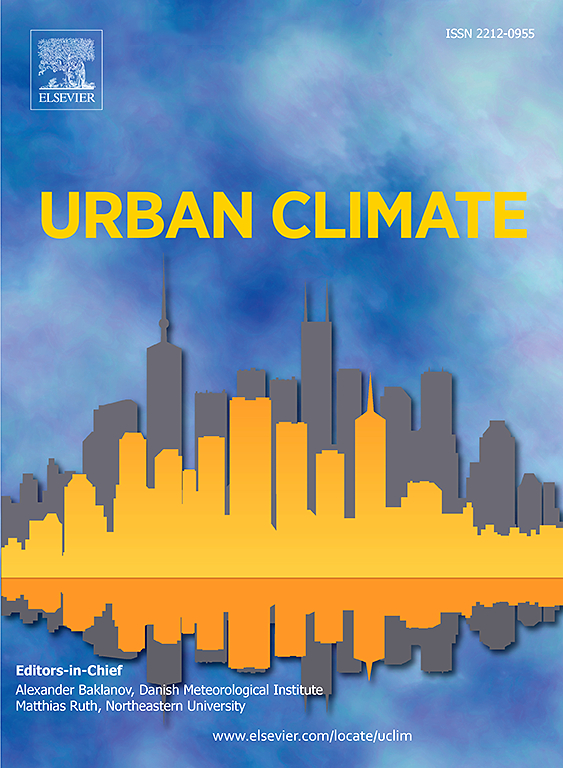Impact of photonic properties of a new radiative cooling material on the urban heat island and the radiation balance
IF 6
2区 工程技术
Q1 ENVIRONMENTAL SCIENCES
引用次数: 0
Abstract
A photonic meta-concrete (PMC), a radiative cooling material based on conventional concrete, is under development. This material reflects solar radiation through its high albedo and emits heat as longwave radiation via the atmospheric window, achieving effective cooling. This study assesses the PMC's impact on the urban heat island (UHI) in Belgian cities using the COSMO-CLM regional climate model with the TERRA_URB urban surface parametrization, simulating a 5-day heatwave across Flanders with 1 km horizontal grid spacing. Additionally, the study estimates radiative forcing from PMC application through a radiation scheme and translates this into CO₂-equivalent emission reduction.
The results indicate that PMC reduces the UHI in Brussels, lowering daily surface and nightly 2-m air temperatures by 9.6 °C and 2.7 °C respectively, due to the material high albedo. Scenarios with varying PMC coverage ratios show a non-linear relationship between coverage and temperature reduction, where lower coverage yields smaller cooling effects. Applying PMC to all urban roofs results in a radiative forcing reduction of 69.7 W/m2, equivalent to 22 kt of potential reduced greenhouse gas emissions. Although full PMC coverage on urban rooftops may be challenging, these findings underscore the material's potential for UHI mitigation, offering substantial cooling benefits and greenhouse gas reductions in large-scale applications.
一种新型辐射冷却材料的光子特性对城市热岛和辐射平衡的影响
光子超混凝土(PMC)是一种以传统混凝土为基础的辐射冷却材料。这种材料通过其高反照率反射太阳辐射,并通过大气窗口以长波辐射的形式释放热量,实现有效的冷却。本研究利用COSMO-CLM区域气候模式和TERRA_URB城市地表参数化,模拟了一次横贯法兰德斯地区、水平网格间隔为1 km的5天热浪,评估了PMC对比利时城市热岛的影响。此外,该研究通过辐射方案估算了PMC应用产生的辐射强迫,并将其转化为CO₂当量的减排。结果表明,由于材料的高反照率,PMC降低了布鲁塞尔的热岛指数,使日地面和夜间2 m空气温度分别降低9.6°C和2.7°C。具有不同PMC覆盖率的情景显示出覆盖率与温度降低之间的非线性关系,其中较低的覆盖率产生较小的冷却效应。将PMC应用于所有城市屋顶可使辐射强迫减少69.7 W/m2,相当于减少了22 kt的潜在温室气体排放。尽管在城市屋顶上完全覆盖PMC可能具有挑战性,但这些研究结果强调了该材料在缓解热岛影响方面的潜力,在大规模应用中提供实质性的冷却效益和温室气体减排。
本文章由计算机程序翻译,如有差异,请以英文原文为准。
求助全文
约1分钟内获得全文
求助全文
来源期刊

Urban Climate
Social Sciences-Urban Studies
CiteScore
9.70
自引率
9.40%
发文量
286
期刊介绍:
Urban Climate serves the scientific and decision making communities with the publication of research on theory, science and applications relevant to understanding urban climatic conditions and change in relation to their geography and to demographic, socioeconomic, institutional, technological and environmental dynamics and global change. Targeted towards both disciplinary and interdisciplinary audiences, this journal publishes original research papers, comprehensive review articles, book reviews, and short communications on topics including, but not limited to, the following:
Urban meteorology and climate[...]
Urban environmental pollution[...]
Adaptation to global change[...]
Urban economic and social issues[...]
Research Approaches[...]
 求助内容:
求助内容: 应助结果提醒方式:
应助结果提醒方式:


